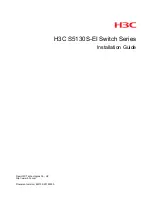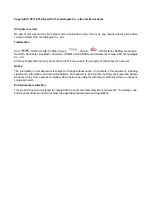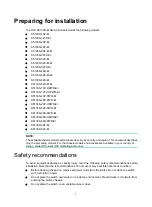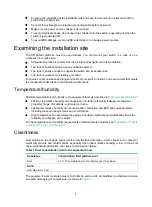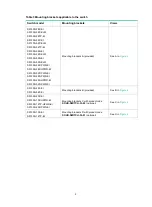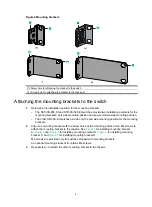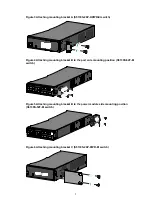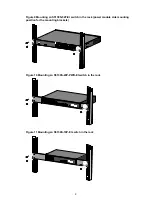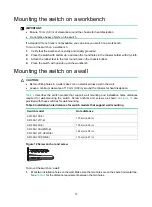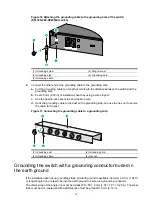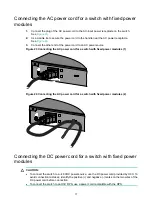
2
•
Ensure good ventilation at the installation site and keep the air inlet and outlet vents of the
switch free of obstruction.
•
Connect the yellow-green protection grounding cable before power-on.
•
Make sure the power source voltage is as required.
•
To avoid electrical shocks, do not open the chassis while the switch is operating or when the
switch is just powered off.
•
To avoid ESD damage, wear an ESD wrist strap to hot-swap a power module.
Examining the installation site
The S5130S-EI switches must be used indoors. You can mount your switch in a rack or on a
workbench, but make sure:
•
Adequate clearance is reserved at the air inlet and exhaust vents for ventilation.
•
The rack or workbench has a good ventilation system.
•
The rack is sturdy enough to support the switch and its accessories.
•
The rack or workbench is reliably grounded.
To ensure correct operation and long service life of your switch, install it in an environment that meets
the requirements described in the following subsections.
Temperature/humidity
Maintain temperature and humidity in the equipment room as described in "
."
•
Lasting high relative humidity can cause poor insulation, electricity leakage, mechanical
property change of materials, and metal corrosion.
•
Lasting low relative humidity can cause washer contraction and ESD and cause problems
including loose mounting screws and circuit failure.
•
High temperature can accelerate the aging of insulation materials and significantly lower the
reliability and lifespan of the switch.
For the temperature and humidity requirements of different switch models, see "
views and technical specifications
."
Cleanliness
Dust buildup on the chassis might result in electrostatic adsorption, which causes poor contact of
metal components and contact points, especially when indoor relative humidity is low. In the worst
case, electrostatic adsorption can cause communication failure.
Table 1 Dust concentration limit in the equipment room
Substance
Concentration limit (particles/m³)
Dust
≤
3 x 10
4
(no visible dust on the tabletop over three days)
NOTE:
Dust diameter
≥
5
μ
m
The equipment room must also meet strict limits on salts, acids, and sulfides to eliminate corrosion
and premature aging of components, as shown in
.

